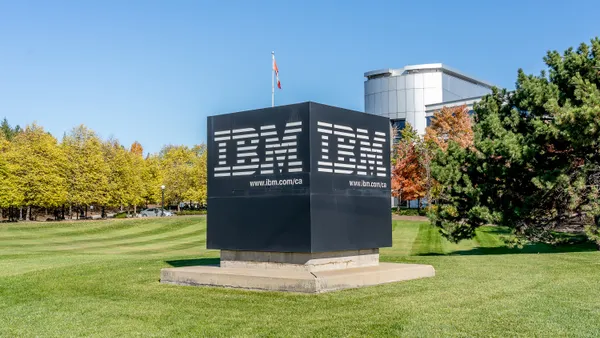Left and right, businesses are boasting about their mountainous stores of collected data. But having data is just the first step, and it doesn't mean much without analytics.
The majority of businesses, 87%, have low analytics and business intelligence maturity, according to Gartner. Efforts are often limited to spreadsheet-based analytics, personal data extracts or stand-alone projects without central guidance or leadership.
Analytics and artificial intelligence capabilities are increasingly emerging as strategy drivers and innovators in a business. But many organizations are just starting the path to advanced analytics, and have many years and a swathe of foundational investments to make.
Looking ahead to 2019, several themes will define the future of enterprise analytics, including AI and automation capabilities, the demands of good data and transparency, and the steady push to extend analytics from data scientists to the rest of the business.
-
AI and analytics: Two sides of the same coin
The future of enterprise analytics is inextricably woven with artificial intelligence and machine learning. From automating the analytics pipeline to making the quick inferences a human is just not capable of, AI and ML will revolutionize what business can do with data and how fast they use it.
Of organizations already implementing machine learning, predictive analytics is the most impactful branch, according to 82% executives in a Harvard Business Review and Google Cloud survey. Across healthcare, financial services, manufacturing, retail and media, analytics and modeling are among the top applications of AI and ML.
The value proposition of enterprise analytics lies within AI and ML, and businesses need to make that merger a reality, according to Francois Lopitaux, senior director of product management at Salesforce, in an interview with CIO Dive. Moving forward, operationalizing the model and making it widely available is crucial.
In addition to capability and talent shortages in data science, businesses also have to navigate the challenges surrounding AI and ML, such as a lack of transparency, limited and expensive talent, supporting infrastructure and data integrity.
A lot of people think AI is like magic, and in 2019 it's important to demystify the technology. AI is not gold at the end of a rainbow but rather nuggets of value along the way, according to Ketan Karkhanis, SVP and GM of Analytics Cloud at Salesforce, in an interview with CIO Dive in October.
-
Evolving AI from a mysterious, black box
One of the biggest critiques of AI and ML have been a lack of explainability. Companies are working on tools to counter bias and improve explainability, efforts that will continue through 2019 and beyond.
Regulatory shifts have forced businesses to have a different relationship with their data, increasing accountability about how it is collected, shared, processed and communicated. This puts pressures on businesses to move away from the black box of AI and ML, with transparency and interpretability emerging as greater priorities for accountable businesses.
New tools in 2019 will help organizations shift to a more "white box" approach to data science that prioritizes transparency and explainability without huge sacrifices to accuracy, according to Ryohei Fujimaki, founder and CEO of dotData, in a statement emailed to CIO Dive.
But before an outcome even needs to be explained, a business needs good data.
"Regardless of your beginner or expert AI status, data is the Debbie Downer of any AI project," according to Forrester Research . "Data doldrums" continue to weigh down organizations embarking on AI, and continued investment in information architecture in 2019 will be crucial for businesses that want to make the most of analytics.
The enactment of the EU's General Data Protection Regulation in May was a seismic shift for businesses' relationship with data, setting off ripples in other countries.
At some point, the changes in privacy and data protection will stop being a new thing and simply be something that businesses have to do, according to Daniel Castro, vice president of the Information Technology and Innovation Foundation, in an interview with CIO Dive. Many organizations are still not thinking about compliance as what they can do with their data next.
-
Companies that made key investments in cloud, business networks will see pay off
Enterprise analytics is not a one-off project for businesses: It is a years-long investment to get off the ground that will require continued attention, talent and innovation.
Businesses are investing in AI and ML capabilities for BI and analytics. Yet many still lack the foundational building blocks that will allow the business to deliver value at scale.
Strides made in enterprise analytics in 2019 will be a reflection of the businesses that made necessary investments over the last two to three years, according to Brian Hopkins, vice president and principal analyst at Forrester Research, in an interview with CIO Dive. The organizations that made the right foundational investments will start to differentiate and move ahead from those who haven't.
Analytics and AI accelerate on the other infrastructure innovations and investments businesses are making. Businesswide network fabrics, cloud computing and big data are among the hard areas that will come to play, and workforce and talent investments can make the difference between sink or swim.
Network agility is a key foundation that supports all areas of IT, and in 2019 and beyond organizations have to strategize how infrastructure and operations can support this agility, according to Gartner. Automation and analytics will be keys for success.
Moving forward, cloud-based machine learning environments will reach new levels of maturity, and many of these tools will allow businesses to take advantage of AI without needing a data scientist on hand, according to Castro.
The dissemination of these capabilities may start in 2019, but extending through industries will take much longer.
-
Data science automation platforms will spread
The bandwidth of data scientists can only be stretched so far, and automation capabilities are crucial for taking advanced enterprise analytics to the next step, especially as businesses demand more value, speed and innovation.
Analytics capabilities have been a major driver in the RPA market, which is projected to hit $1.7 billion in revenue next year, according to Forrester Research.
Data science automation platforms will be an area of key focus in 2019 to facilitate data preparation, feature engineering and pipeline production, according to Fujimaki. Automation can streamline operationalization and development and help deliver value in a matter of days instead of months.
Democratizing parts of analytics such as algorithm and model creation moves the technology from a nascent market to more of a reality, according to Lopitaux.
It will drive considerable time and cost savings for data science and analytics teams, and as automation takes over manual tasks from data scientists, it will allow teams to focus on areas that once fell to the side.
Automation and AI will help companies unmask problems that used to be blamed on technology that are actually "people problems," such as cultural issues, misaligned management and rivalry, according to Hopkins.
-
Citizen data scientists will have the power of analytics without having to code
The integration of AI and automation into workloads is helping democratize data science, but the technology shouldn't just be made available to more AI engineers and data scientists. Businesses also need to open it up to new classes of workers.
Opening up enterprise analytics means moving it from something like a science project to something that is accessible and possible to a lot of customers and companies, according to Lopitaux. What were once long data projects will become streamlined, accessible initiatives.
New platforms that simplify tasks will open up the field for professionals outside of data science, such as business intelligence and data engineers and business analysts, according to Fujimaki. This will create a data-drive culture across the organization and open up data scientists to focus on higher-level projects.
With analytics and AI talent in such hot demand, creating low- or no-code options to make the technology accessible is crucial to compensate for the skills gap and inject the capabilities throughout areas of the business.
A user doesn't have to know how a microwave knows how to work to use it, and as AI is commoditized, no-code and point-and-click tools will make AI a utility, said Karkhanis, in predictions shared with CIO Dive.
Many AI applications will even be built by professionals with minimal or no AI training, he said.














